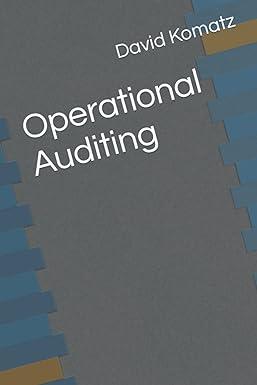Question
In 2001, three dentists, Ben Rogers, Judy Wilkinson, and Henry Walker, formed a partnership to open a practice in Toledo, Ohio. The partnerships primary purpose
In 2001, three dentists, Ben Rogers, Judy Wilkinson, and Henry Walker, formed a partnership to open a practice in Toledo, Ohio. The partnerships primary purpose was to reduce expenses by sharing building and equipment costs, supplies, and the services of a clerical staff. Each contributed $70,000 in cash and, with the help of a bank loan, constructed a building and acquired furniture, fixtures, and equipment. Because the partners maintained their own separate clients, annual net income has been allocated as follows: Each partner receives the specific amount of revenues that he or she generated during the period less one-third of all expenses. From the beginning, the partners did not anticipate expansion of the practice; consequently, they could withdraw cash each year up to 90% of their share of income for the period.
The partnership had been profitable for a number of years. Over the years, Rogers has used much of his income to speculate in real estate in the Toledo area. By 2015, he was spending less time with the dental practice so that he could concentrate on his investments. Unfortunately, a number of these deals proved to be bad decisions and he incurred significant losses. On November 8, 2015, while Rogers was out of town, his personal creditors filed a $97,000 claim against the partnership assets. Unbeknownst to Wilkinson and Walker, Rogers had become insolvent.
Wilkinson and Walker hurriedly met to discuss the problem because Rogers could not be located. Rogerss capital account was currently at $105,000, but the partnership had only $27,000 in cash and liquid assets. The partners knew that Rogerss equipment had been used for a number of years and could be sold for relatively little. In contrast, the building had appreciated in value, and the claim could be satisfied by selling the property. However, this action would have a tremendously adverse impact on the dental practice of the remaining two partners.
1. What alternatives are available to Wilkinson and Walker and what are the advantages and disadvantages of each?
2. If you were Wilkinson or Walker, what approach would you take to this situation?
Step by Step Solution
There are 3 Steps involved in it
Step: 1

Get Instant Access to Expert-Tailored Solutions
See step-by-step solutions with expert insights and AI powered tools for academic success
Step: 2

Step: 3

Ace Your Homework with AI
Get the answers you need in no time with our AI-driven, step-by-step assistance
Get Started


